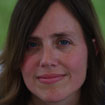For in Christ the fullness of God dwells bodily… (Colossians 2:9).
Now you are the body of Christ, and individually members of it (I Corinthians 12:27).
I have to admit that in life before cancer, I didn’t give the universal body of Christ much thought. I could — and would — extol the virtues of participation in local incarnations of Christ’s body.
I’ve often heard it said that when the church is really being the church it is especially present with those who suffer, and as the daughter of a pastor, I’ve witnessed local churches time and again embody the hands and feet of Christ in their ministries to those in pain.
While my defense of the value of the local church used to come primarily from watching congregations bring Christ’s love and care to others in need, I now am a recipient of the church being the church in an intimately personal way.
In the weeks following my diagnosis of stage IV cancer, I slowly made my way back to Sunday morning worship at our church. Gentle hugs, warm hands grasping for ours, made my family and I aware in tactile ways of God’s embrace of us during this time of despair. When we came to the “Prayers of the People” during worship, my daughters’ arms often found their way to my shoulders, while other friends seated nearby extended their arms, touching my back and arms. As we continue to hear my name offered up each week in prayer, we are reminded that our prayers are joined by the chorus of prayers surrounding us. To be accompanied by the church on this journey reassures me that we’re not walking alone. Their hands and feet have become the hands and feet of a healing Christ.
The power of the local church has become even more palpable to me.
But through this cancer journey, I’ve also been awakened to a new — indeed, almost mystical — understanding of the universal body of Christ and of the healing effects it has had on the lives of me and my family. The body of Christ is no longer an abstract, intangible concept glossed over during the reciting of the creed.
Instead I’ve been surprised and humbled by the way in which, as the author of Colossians says, the fullness of God dwells bodily in Christ (Col. 2.9). The church, as the embodiment of Christ, has become a tangible agent of grace in my life, a gift of support that has accompanied me through the valley of the shadow of cancer.
And what’s been particularly surprising to me is that the experience of the church universal has been mediated through what I’m calling the virtual body of Christ; that is, the body of Christ incarnated in, with, and through the power of Internet sites like Caring Bridge.
Now let me be clear: I’m not trying to sound New Age-y or to issue some feel-good platitude about how cancer has made more appreciative of the value of community.
What I’m talking about is a new understanding of the church universal, a breathtakingly broad embodiment of Christ’s hands and feet ministering amidst the sorrows and joys of our world. I’m talking about Christ made present to me and my family through the connections made possible by a website.
Caring Bridge has facilitated communication between me and my loved ones, friends, acquaintances and even those I’ve never met from across the country and beyond. Without this communication tool, I would not have been held in prayer by nearly as vast a network of support.
This is not to say that before the Internet people were without the benefit of vast networks of prayers and support. But Internet connection has exponentially increased the speed and scope of such connections. And this more frequent communication — in my case, both with my updates and with the guestbook entries of encouragement — has been of immeasurable support to us since the diagnosis.
Not only were members of our own church kept up-to-date through Caring Bridge, but the website made my story and the updates available to many other communities of faith, from the church where I grew up to the church my husband and I joined during graduate school in Nashville to my in-laws’ church in Duluth and to a friend’s church outside Chicago.
As readership of the Caring Bridge site grew, prayer shawls from other churches were delivered to our home; we now have six shawls, more than one for each member of the family. These shawls confirm for us again and again the mysterious support and power of the church universal.
This experience of the virtual body of Christ has also gifted me with a fresh appreciation of the necessarily ecumenical character of church catholicity. Prompted by my entries on the Caring Bridge site, many of my friends from the Roman Catholic tradition — the church that holds most tightly to this notion of universality — have embodied Christ to me in profound ways.
Since the news of my diagnosis spread via Caring Bridge, I’ve had Mass dedicated to me in India, Sri Lanka, California and the Twin Cities; I’ve received hundreds of cards from one California parish where Sunday School classes prayed for me weekly; and I’ve been given a medallion blessed and sent on to me by a priest friend. These traditions of dedicating, blessing, and honoring — traditions that make rare appearances in the Protestant expressions of church with which I am most familiar — have made their mark on my soul. To hold the “With God, all things are possible” medallion brings deep comfort.
What does it mean, then, to preach about the fullness of God dwelling bodily in Christ in this age of virtual connectedness? It seems that those of us in the pulpit can acknowledge the power of the virtual while simultaneously asserting that the virtual body of Christ — if it truly is the fullness of God — should ultimately turn us back toward attending to the actual, particular bodies that fill each of our lives. Thanks be to God for the virtual — and the real — and for preachers who help us see the connection between the two.
Excerpt from Fractured Hope: On Having Cancer, Talking Faith and Accepting Grace

